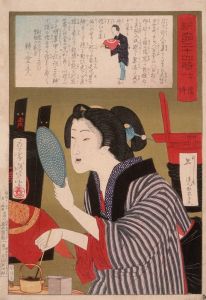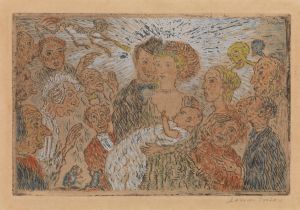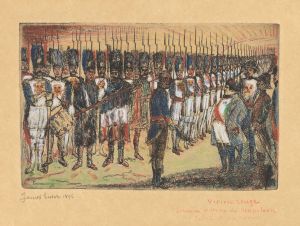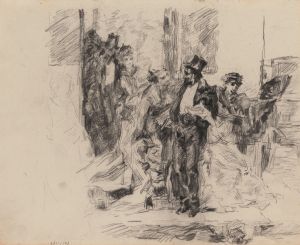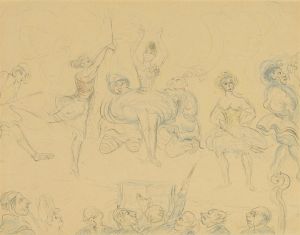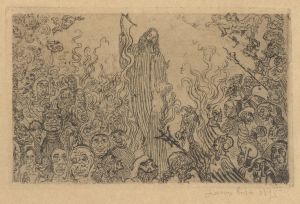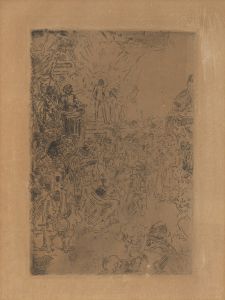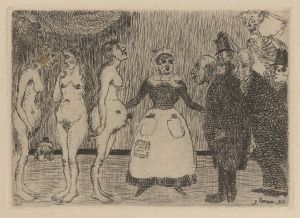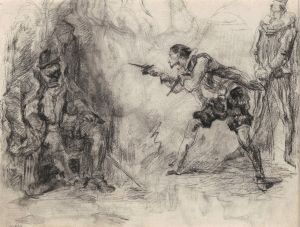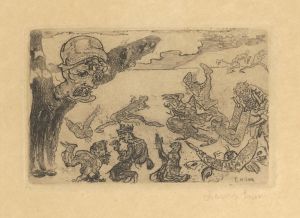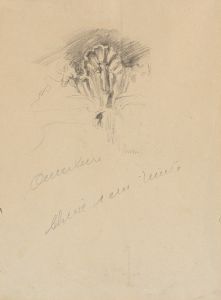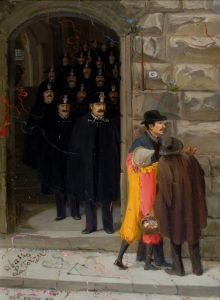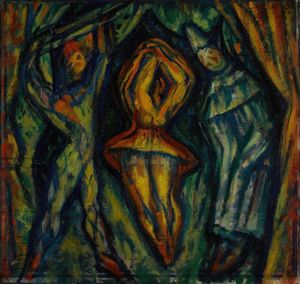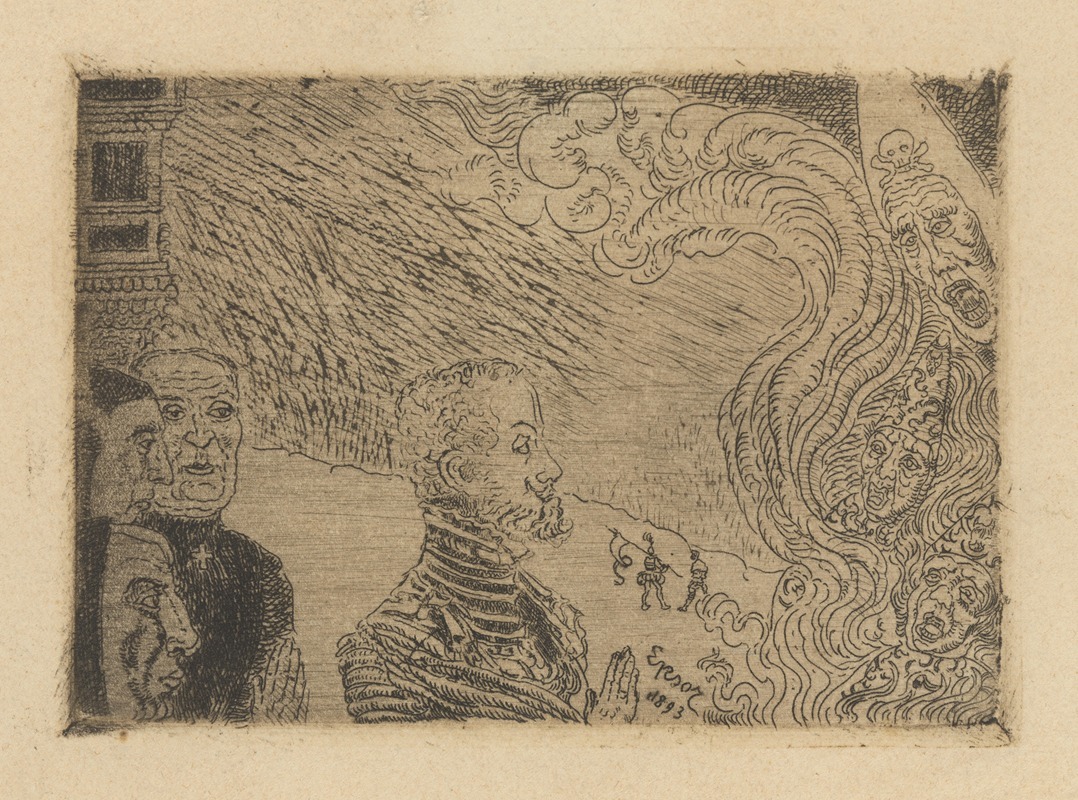
Auto-da-fe
A hand-painted replica of James Ensor’s masterpiece Auto-da-fe, meticulously crafted by professional artists to capture the true essence of the original. Each piece is created with museum-quality canvas and rare mineral pigments, carefully painted by experienced artists with delicate brushstrokes and rich, layered colors to perfectly recreate the texture of the original artwork. Unlike machine-printed reproductions, this hand-painted version brings the painting to life, infused with the artist’s emotions and skill in every stroke. Whether for personal collection or home decoration, it instantly elevates the artistic atmosphere of any space.
James Ensor's painting "Auto-da-fé" is a notable work by the Belgian artist, who is renowned for his unique and often provocative style. Ensor, born in 1860 in Ostend, Belgium, was a key figure in the Symbolist movement and later influenced the development of Expressionism. His works frequently explore themes of death, masks, and the grotesque, often reflecting his critical view of society and its institutions.
"Auto-da-fé," created in 1890, is a vivid example of Ensor's fascination with the macabre and the theatrical. The term "auto-da-fé" refers to the public ceremony during the Spanish Inquisition where heretics were punished, often culminating in execution by burning. Ensor's painting, however, is not a literal depiction of these historical events but rather an allegorical and satirical interpretation.
In "Auto-da-fé," Ensor employs his characteristic style, using bright, almost garish colors and a crowded composition to convey chaos and intensity. The painting is populated with a variety of figures, many of whom are wearing masks, a recurring motif in Ensor's work. These masks serve to dehumanize the figures, turning them into caricatures and emphasizing the theme of hypocrisy and the loss of individuality in society.
The scene is chaotic, with figures engaged in various activities that suggest a sense of disorder and moral ambiguity. Ensor's use of masks and costumes can be interpreted as a critique of societal norms and the facades people maintain. The painting's crowded composition and vibrant colors create a sense of movement and energy, drawing the viewer into the tumultuous scene.
Ensor's work often reflects his critical stance towards authority and organized religion, and "Auto-da-fé" can be seen as a commentary on the oppressive nature of these institutions. By referencing the Inquisition, Ensor highlights the dangers of dogmatism and the persecution of those who dissent from accepted norms. The painting's satirical tone underscores Ensor's disdain for the hypocrisy he perceived in society.
"Auto-da-fé" is a testament to Ensor's innovative approach to art, blending elements of satire, symbolism, and expressionism. His work was initially met with resistance and criticism, but over time, Ensor gained recognition as a pioneering artist who challenged conventional artistic norms. Today, he is celebrated for his contributions to modern art and his influence on subsequent generations of artists.
The painting is housed in the Royal Museum of Fine Arts in Antwerp, Belgium, where it continues to be studied and appreciated for its bold style and thought-provoking themes. Ensor's ability to combine humor, critique, and vivid imagery makes "Auto-da-fé" a compelling piece that invites viewers to reflect on the complexities of human nature and society.





